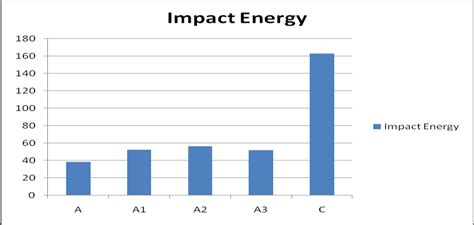Understanding Impact Strength
Impact strength is a measure of a material’s ability to absorb energy during a sudden, high-speed impact without fracturing. It is an essential property for materials used in applications where they may be subjected to sudden loads, drops, or collisions. Impact strength is typically measured using standardized test methods, such as the Izod or Charpy impact tests.
Izod Impact Test
The Izod impact test is a standardized method for determining the impact strength of materials, particularly plastics and composites. In this test, a notched specimen is clamped vertically at one end, and a pendulum with a known weight and velocity strikes the specimen’s free end. The energy absorbed by the specimen during the impact is measured, and the impact strength is calculated as the energy absorbed per unit cross-sectional area of the specimen (J/m² or ft-lbs/in²).
Charpy Impact Test
The Charpy impact test is another standardized method for measuring impact strength, similar to the Izod test. The main difference is that in the Charpy test, the specimen is supported horizontally at both ends, and the pendulum strikes the specimen’s center. The impact strength is calculated in the same way as in the Izod test.
Impact Strength of FR4
The impact strength of FR4 can vary depending on factors such as the specific composition of the material, the manufacturing process, and the test conditions. However, typical values for the impact strength of FR4 are as follows:
| Test Method | Impact Strength |
|---|---|
| Izod | 53-67 J/m |
| Charpy | 48-62 kJ/m² |
It is important to note that these values are for unnotched specimens. The presence of notches or other stress concentrations can significantly reduce the impact strength of FR4.
Factors Affecting FR4 Impact Strength
Several factors can influence the impact strength of FR4:
-
Resin composition: The type and amount of epoxy resin used in the FR4 can affect its impact strength. Some resin formulations may provide better toughness and impact resistance than others.
-
Fiberglass reinforcement: The type, orientation, and volume fraction of the fiberglass reinforcement can also impact the material’s strength. Higher glass content generally leads to higher impact strength, but it may also increase the material’s brittleness.
-
Manufacturing process: The manufacturing process, including the curing temperature and time, can affect the impact strength of FR4. Proper curing is essential for achieving optimal mechanical properties.
-
Environmental factors: Exposure to high temperatures, humidity, or chemicals can degrade the impact strength of FR4 over time. It is essential to consider the operating environment when selecting materials for a specific application.
Improving FR4 Impact Strength
There are several ways to improve the impact strength of FR4:
-
Toughened epoxy resins: Using toughened epoxy resins, such as those modified with rubber or thermoplastics, can enhance the impact strength of FR4. These resins provide better energy absorption and crack resistance compared to standard epoxy resins.
-
Fiber orientation: Orienting the fiberglass reinforcement in the direction of the expected impact loads can help improve the impact strength of FR4. This can be achieved through proper design and manufacturing techniques.
-
Hybrid reinforcements: Incorporating additional reinforcement materials, such as aramid or carbon fibers, alongside the fiberglass can enhance the impact strength and overall mechanical properties of FR4.
-
Fillers and additives: Adding fillers or additives, such as rubber particles or nanofillers, to the epoxy resin can help improve the impact strength of FR4 by providing additional energy absorption mechanisms.

Applications of FR4
FR4 is widely used in various industries due to its excellent balance of properties, including its impact strength. Some common applications of FR4 include:
-
Printed circuit boards (PCBs): FR4 is the most widely used substrate material for manufacturing PCBs. Its impact strength is essential for ensuring the reliability and durability of electronic devices, especially those subjected to mechanical stresses or impacts.
-
Structural components: FR4 can be used to manufacture structural components, such as brackets, housings, and enclosures, for electronic devices or other applications where impact resistance is required.
-
Automotive electronics: FR4 is used in the production of PCBs and other components for automotive electronics, where they may be exposed to vibrations, shocks, and impacts.
-
Aerospace applications: FR4 is used in various aerospace applications, such as avionics, where high reliability and impact resistance are critical.
-
Industrial equipment: FR4 is used in the manufacturing of PCBs and components for industrial equipment, such as control systems and sensors, where they may be subjected to harsh environments and mechanical stresses.
FAQ
1. What is the typical impact strength of FR4?
The typical impact strength of FR4 ranges from 53-67 J/m for the Izod test and 48-62 kJ/m² for the Charpy test. However, these values can vary depending on factors such as the specific composition of the material and the test conditions.
2. Can the impact strength of FR4 be improved?
Yes, the impact strength of FR4 can be improved by using toughened epoxy resins, optimizing fiber orientation, incorporating hybrid reinforcements, or adding fillers and additives to the epoxy resin.
3. What factors can affect the impact strength of FR4?
Factors that can affect the impact strength of FR4 include the resin composition, fiberglass reinforcement, manufacturing process, and environmental factors such as temperature, humidity, and chemical exposure.
4. What industries commonly use FR4?
FR4 is widely used in the electronics industry for making PCBs, as well as in the automotive, aerospace, and industrial sectors for various applications where impact resistance is required.
5. How is impact strength measured?
Impact strength is typically measured using standardized test methods, such as the Izod or Charpy impact tests. These tests involve striking a notched specimen with a pendulum and measuring the energy absorbed during the impact.

No responses yet